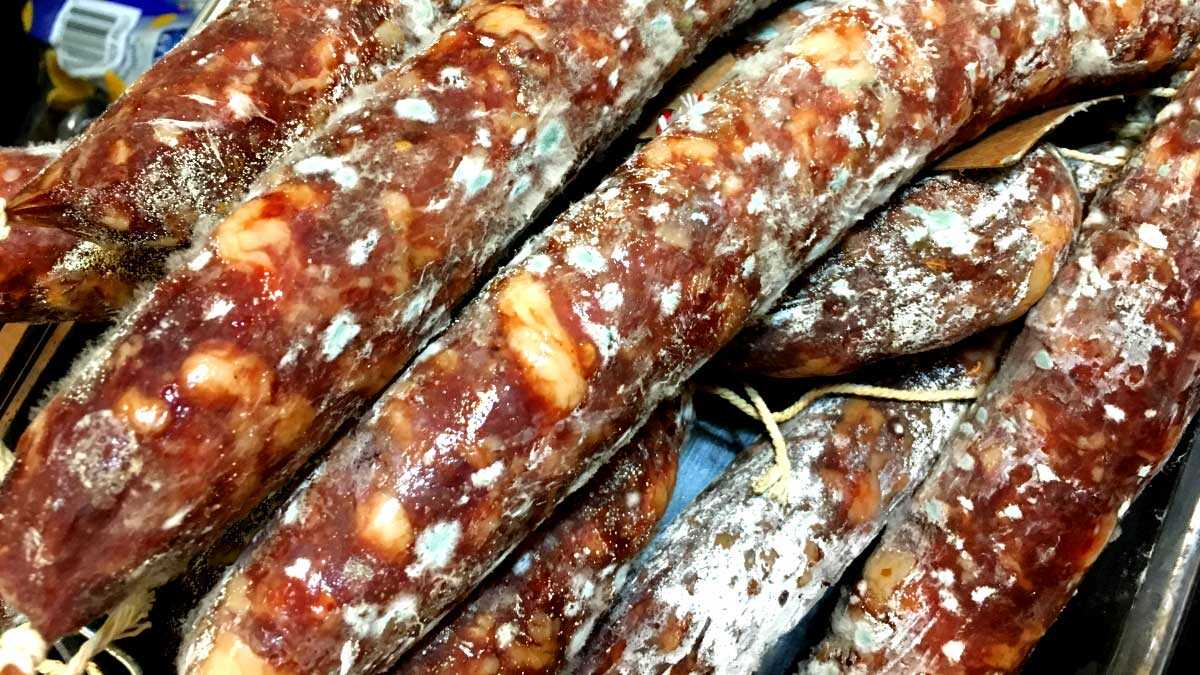
O mold, fungus or mold is a very common problem in the production of salami, hearts or others sausages or whole pieces of meat from the delicatessen that go through curing/maturing processes. O mold It is a problem that must be taken seriously as some types can generate toxins. For more details on the types of mold, toxins and consumption of contaminated products, read the publication https://charcutaria.org/carnes/mofo-no-salame-e-em-outros-embutidos/
Mold spores are everywhere, including in the air we breathe, and unless you are an expert who can tell the difference between good mold and dangerous mold, it's best not to risk it. Certain molds produce mycotoxins. Mycotoxins are invisible and, in some cases, can cause illness or even death.
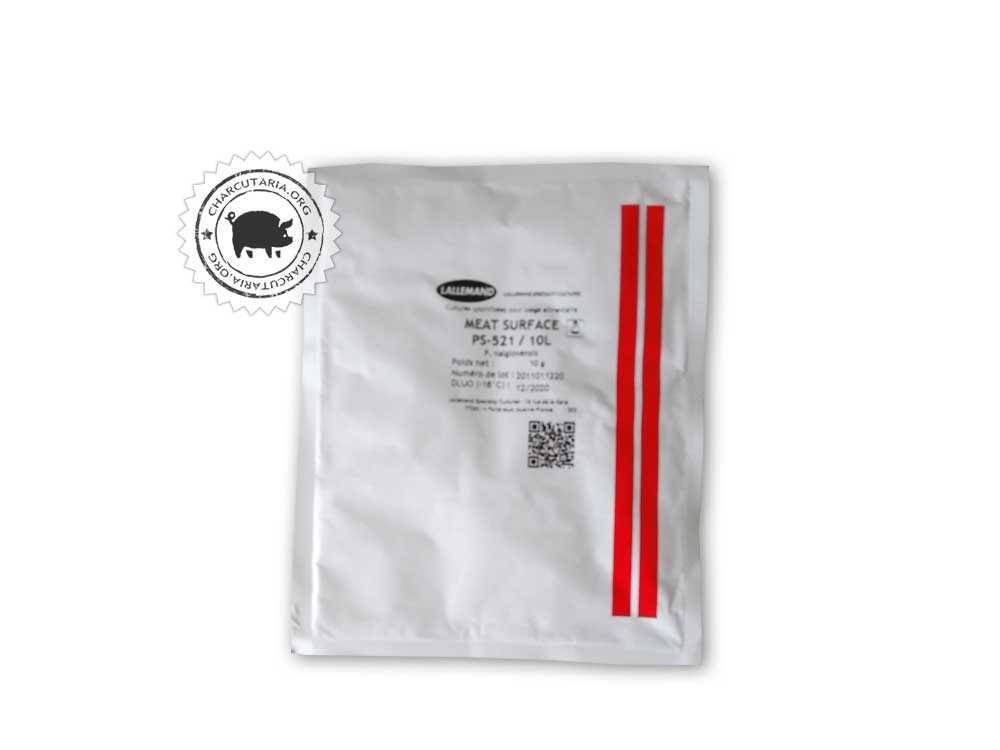
There are many harmless and even beneficial molds on deli meats, such as many in the penicillium family. One of these is called Penicillium nalgiovense, widely used in meats. This is a very common mold in more elaborate products. It is beneficial as it inhibits the proliferation of other molds and helps control moisture loss by creating an external barrier in the product. It also helps balance pH and adds a range of complex flavors to the product. Cheeses also make frequent use of intentional molds, such as brie and Camembert, which commonly use penicillium candidum, which can also be used in meats.
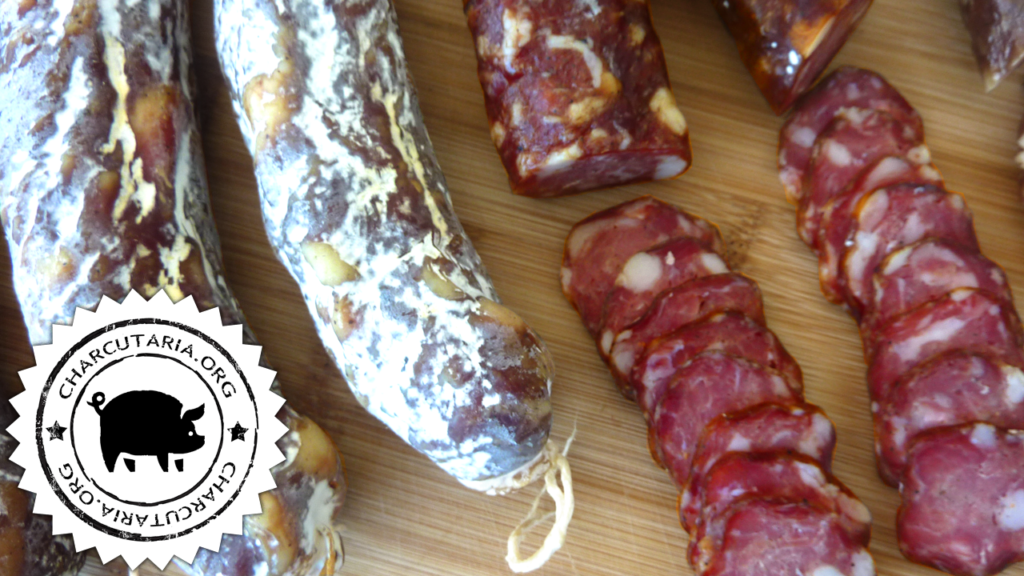
But, if you want to eliminate mold from your production, because you are allergic to penicillin or simply want no mold to grow on your delicatessen, one solution is to use the potassium sorbate. O potassium sorbate It is used widely in the food industry and is typically added to foods to control the growth of fungi, yeast and bacteria. Is it possible to use it in conjunction with a starter culture? Yes, but in this case we don't want to kill the beneficial bacteria that grow inside, so this is not an ingredient that will be added to the salami dough. It should be used in a solution by dipping or spraying after the product has been embedded and fermented. It should be added to the outside to control mold on the outside of cured meats.
Buy, what is the price of potassium sorbate https://charcutaria.org/produto/sorbato-de-potassio/
Potassium sorbate can be mixed in a ratio of 1:10, so for every 10 grams of potassium sorbate, dissolve it in 100 ml of water. Mix well to dissolve and spray or dip the meat product in this solution. Let the solution dry. Mold will have a hard time growing on the exterior of your product. Apply again if you notice any type of external contamination on the products.
-
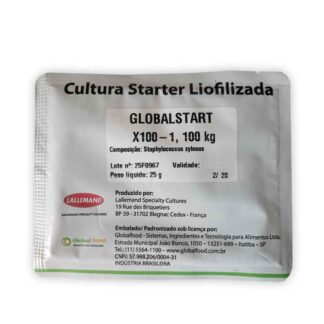 Cultura Starter MaturaçãoR$ 69,90
Cultura Starter MaturaçãoR$ 69,90 -
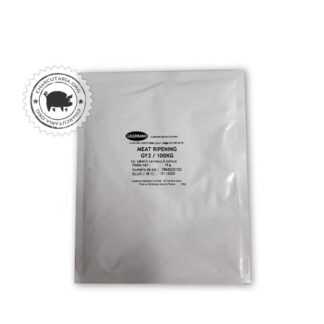 Starter CultureR$ 69,90
Starter CultureR$ 69,90 -
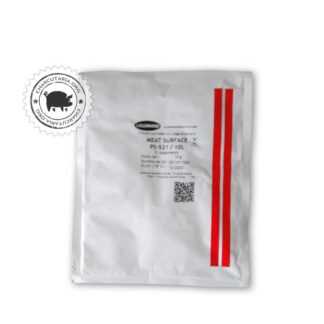 Mold culture mold 600 Penicillium NalgiovenseR$ 129,00
Mold culture mold 600 Penicillium NalgiovenseR$ 129,00




The smoked pork was left in the fridge and became moldy, what should I do to remove it and can it still be consumed?
If the contamination was superficial, you can clean and cut off a layer in the contaminated region. If it has infiltrated a lot, it is best to discard it.
I bought some colonial Italian salami to take away and they are creating this white mold on the outside, they were inside paper packaging, I took them out of the packaging, cleaned them with paper towels to remove this white mold and left them in the open environment to avoid become stuffy. But I'm taking them on a trip, how should I pack them to avoid creating that white mold on the outside again so they don't look spoiled when I give them as a gift?! Or do I leave it as is and clean it again before giving it away?
Hi Marilia. Are the salami still in the casing? If so, remove the casing, clean the salamis well by scrubbing with salted water, dry, apply a little olive oil, wrap well in plastic film or vacuum packaging and keep refrigerated. This way the salami will be much less susceptible to mold or other surface contamination.